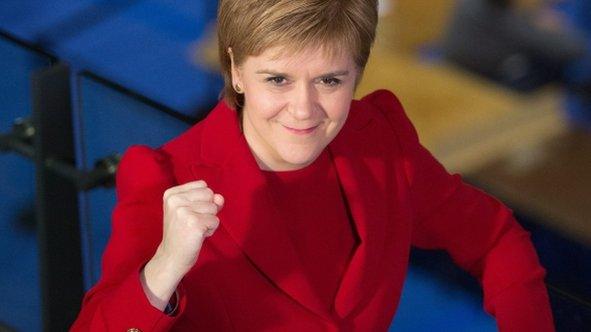Holyrood election: What are the FIVE things we learned by 05:00?
- Published
The early declarations in the Holyrood elections saw the SNP surge ahead - there was also some good news for Conservatives and the Liberal Democrats. But there was little in the way to smile about for Labour. So, at 05:00 what five things had we learned?

1. SNP remain dominant
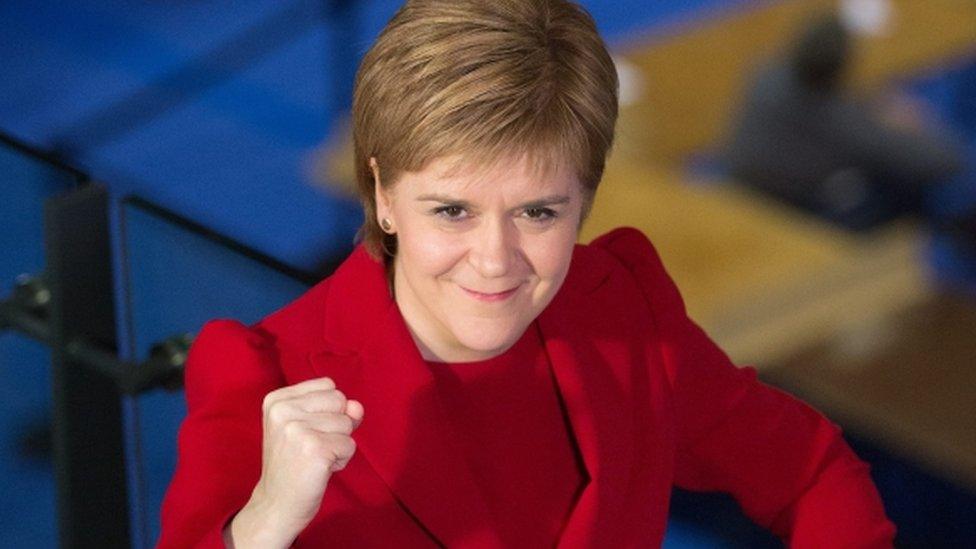
Nicola Sturgeon was in confident mood at the Glasgow count
The SNP remain dominant in the early stages of the election, snapping up 50 of the 62 seats declared and heading towards a clean sweep of Glasgow.
Nicola Sturgeon was one of a host of SNP MSPs to hold their seats with a handy majority - and the leader said her party had won the election.
Humza Yousaf took former Labour leader Johanna Lamont's seat in Pollok, with the SNP taking 46.5% of the vote as of 05:00, up 0.8% from five years ago.
The party faced some setbacks, losing seats to the Tories, Lib Dems and Labour, but remained on course to form a third consecutive government at Holyrood.

2. Tories boosted
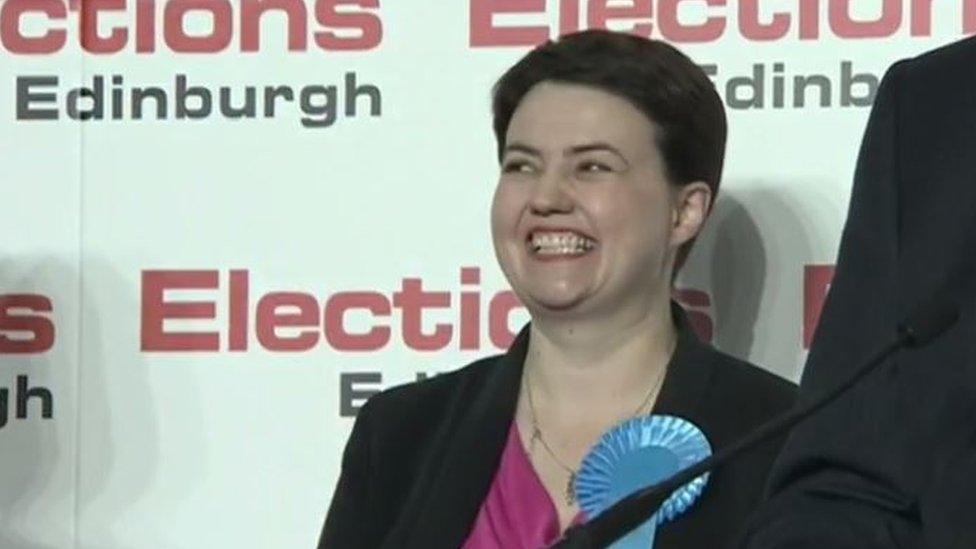
The Scottish Conservatives put in a strong performance in the early stages of the evening, winning seats from the SNP and Labour and increasing their share of the vote in most seats.
Leader Ruth Davidson won a surprise victory in Edinburgh Central, formerly an SNP seat, while Jackson Carlaw took Eastwood from Labour's Ken Macintosh in a three-way battle with the SNP.
Alexander Burnett then took Aberdeenshire West from the SNP's Dennis Robertson in another surprise result.
The growth in Tory support and the decline in Labour's suggests Ms Davidson could potentially be in line to live up to her prediction of replacing Kezia Dugdale as the leader of Holyrood's opposition.

3. Lib Dem recovery?
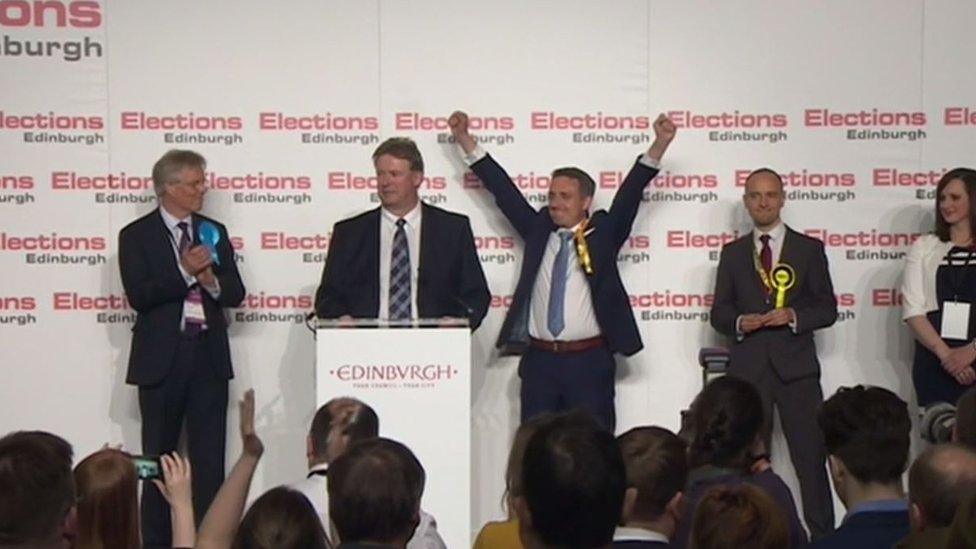
One of the themes of the party's conference before the election was the "Lib Dem fightback", and Willie Rennie's party secured some better-than-expected results in the early results.
The Lib Dems won the first seat of the election, with Liam McArthur increasing his majority with a thumping win in Orkney, before Tavish Scott followed suit with an impressive performance in Shetland.
Mr Rennie went one better, leading by example to take North East Fife from the SNP in a surprise victory, albeit in an area historically supportive of the Liberals.
Alex Cole-Hamilton also secured a comeback win for the Lib Dems in Edinburgh Western, taking the seat from the SNP.

4. It's - nearly - all going wrong for Labour
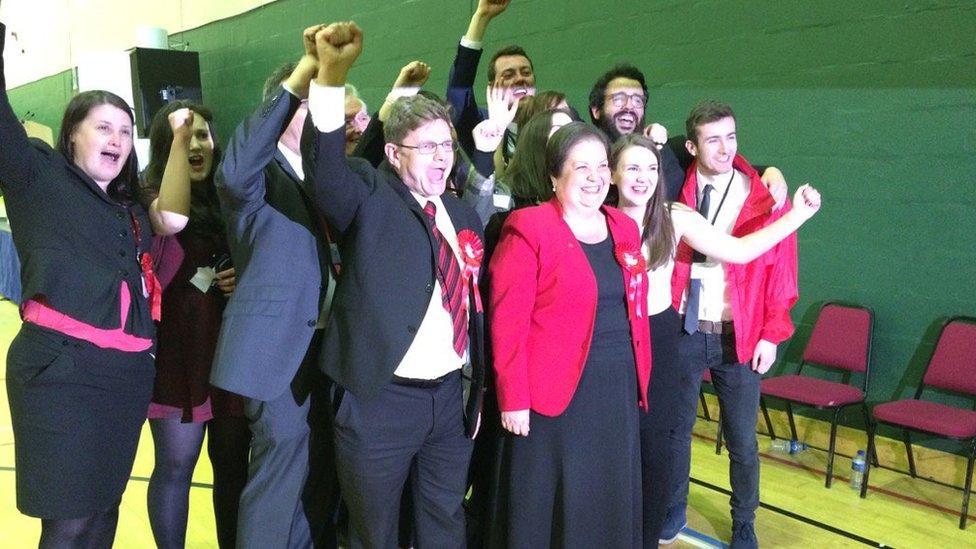
Labour faced a tough start to election night, losing a succession of seats to the SNP and two to the Conservatives, with the party's share of the vote plummeting in most seats.
The party looks set for annihilation in Glasgow, traditionally a Labour heartland, facing the prospect of losing every constituency seat to an SNP clean sweep.
However, there was a chink of light for Labour when former leader Iain Gray held his seat, before Jackie Baillie followed suit in Dumbarton, squeaking in ahead of an SNP challenge by 109 votes.
And the chink became a ray just before 05:00 when Daniel Johnson took Edinburgh Southern from the SNP's Jim Eadie, a key target seat for Labour.

5. An engaged electorate?
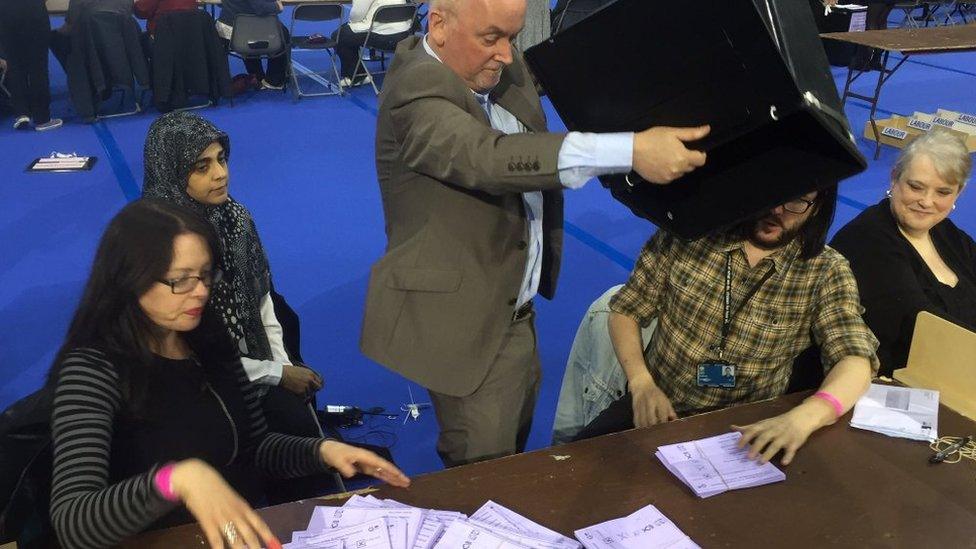
As of 05:00, turnout in the declared seats stood at 55.9%.
This was a decrease on the high engagement of the 2014 independence referendum and the 2015 general election, which stood at 85% and 71% respectively.
However, it was an improvement on the 50.4% who voted in the Scottish Parliament elections of 2011, and indeed the strongest since the first Holyrood election in 1999, when 59.1% of the electorate turned out.
- Published6 May 2016
